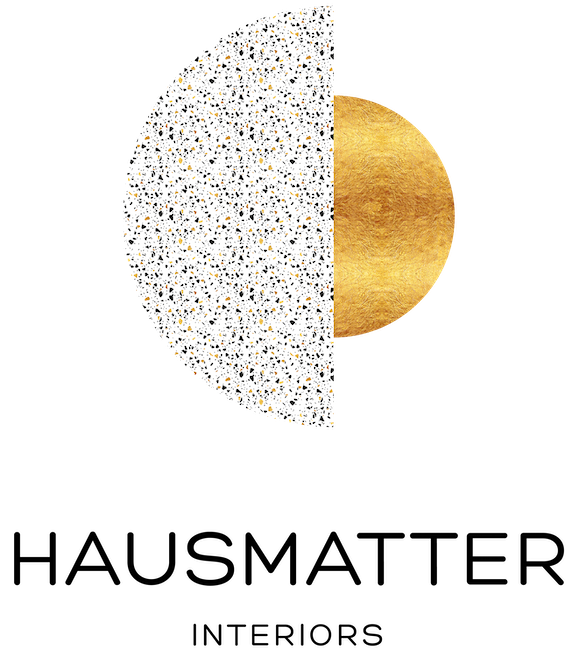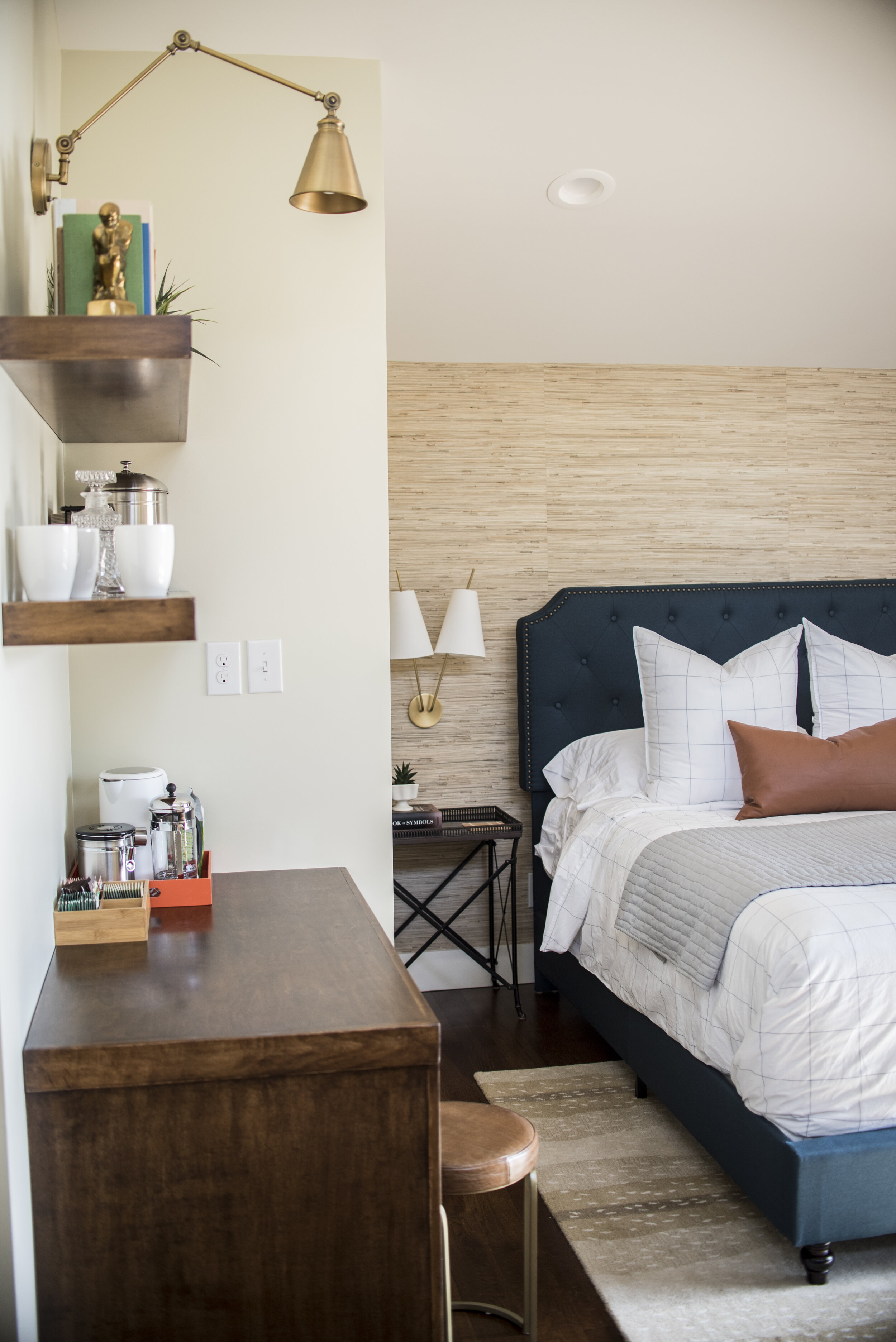The Updated Accent Wall
The accent wall dates back to the early 2000s and was widely popularized by the show, Trading Spaces. It quickly took hold as a way to create a cheap and easy focal point in a room. You could say it’s the mullet of the design world; business in the front, party in the back.
But I’ve been thinking a lot lately about why we do it, and why it so often doesn't work. Here are a list of the not-so-good reasons we add an accent wall:
to create a statement we are afraid will be too overwhelming if carried on all four walls
it’s cheaper to just do one wall
It’s easier to do just one wall
you are trying to create the feeling of boxy rooms in an open concept type of house
But in what cases would it be better to just ditch the one-wall idea and carry it through on all four walls? Does the statement wall look dated since it came on the scene 20 years ago? When does it overwhelm a space rather than add to the style of a room? Well, I’m here to tell you from experience, there’s no quicker way to feel like you’re living in PeeWee’s fun-house than to have an accent wall in every room of your house.
Here are the instances I would avoid an accent wall:
A square room or symmetrical room where all four walls are equally defined, and the furniture is in the center. I’m thinking particularly of rooms that have more than one entry point, like a walk-thru dining room - it can be confusing to see one wall of equal proportion and use appear different. I don’t know why I’m looking at this one wall? Best to keep all walls the same unless you have a substantial piece of furniture like a buffet or cabinet to anchor that wall. If not, consider painting the ceiling an accent color instead (yes, you can do that! Think of it as your fifth wall).
A small room - generally, but I will show you shortly a trick to making this work in any space without it being overwhelming
A walk-thru room with multiple entry points (thinking again about that dining room). You want the accent wall to be the focal point, so you also want to keep in mind that the first thing someone sees changes depending on the entrance they walk through. If someone enters the room from an entry that is NOT opposite your accent wall, does it still feel like an accent wall or does it feel like you only gave one wall your attention?
A wall that has something you don’t necessarily want to draw attention to. Guess where I want to look when you put a bold color behind that toilet? You guessed it! I’m staring at your toilet. You better hope it’s clean. This also goes for vents, filters and anything else you don’t want to highlight.
An open concept space can be a great place to use an accent wall, but be careful that you don’t go overboard with it. The entire point of having an open concept is to have that light and airy, flow where it all feels connected.
Where to use the accent wall:
To define a space within a larger one. Yes, I’m including this on both lists because it can work or it can totally go south. Consider your kitchen backsplash as an opportunity to add an accent wall through a colorful tile, or adding a grasscloth wallpaper to the back of the living room built-in, or a wallpaper in that cozy breakfast-table nook. Just remember, you want things to feel cohesive so you have to consider the entire space as a whole.
To anchor a large piece of furniture, like a sofa or a bed.
To highlight an architectural detail, like an alcove, vaulted ceiling or fireplace.
To just add some pizazz - I’m thinking of that chalkboard wall in the kitchen.
To create depth - hallways can be a really great place to add an accent wall for this reason.
How to make an updated accent wall:
So once you’ve determined which rooms are best suited for an accent wall, there are multiple ways to create one.
Add an architectural detail:
Yes, you can use paint or wallpaper change the look and feel of a wall, but that’s not the only way; adding subtle texture through an architectural detail like moulding can sometimes be just what you need. I did this in my dining room that is open to the kitchen. I used picture moulding and it really elevates the vibe without even needing an additional color on that wall! These can even be purchased pre-made these days, making this a great option for renters!
2. With wallpaper that incorporates a color from the rest of the room:
Pick a color from the wallpaper and take it to your local paint shop to have it color matched. This will be the color you use on the other three walls to create a seamless look to the room. If you want a more cohesive look, pick the color most present in the wallpaper, like the background color. If you want to keep things edgy and create more of an “statement”, pick one of the accent colors wall from your wallpaper as your paint color. To do this in reverse (the easier way), pick a wallpaper that already has your existing wall color from the other three walls. Or consider choosing a textured paper that is a neutral color, like grasscloth. Either way, it’s going to create a room that feels more intentional. More grown-up. More 2021.
I recently did this very thing in my small brick ranch with the help of Spoonflower! I color matched the cream color from this amazing inkblot wallpaper for my living room wall. It turned out beautifully! It’s just enough impact, without feeling overwhelming. I even painted the fireplace the same color so it blends in nicely.
3. Using paint:
Consider creating a mural as your accent wall or something even easier like stripes or a stencil that incorporate the color from the other three walls.
4. Use a natural material
Reclaimed wood, stone, brick etc. are all great for creating an updated accent wall because these materials are neutral and tend to not overwhelm a space. These are the materials I find can break all the rules from my list of don’t’s above, and still work. So when in doubt, go natural!
I used grasscloth on an accent wall in this Airbnb Design and the result added so much warmth and texture to the room.
Still not convinced? Here are some more examples of the updated accent wall:
I love how this homeowner created a frame for this grasscloth. There’s still the primary wall color on all four sides, but it creates the feel of an “accent wall”.
A simple arch creates just enough interest.
source
While I don’t think just any room can handle a bold, dark color, this room certainly can. It has the ceiling height and natural light to pull it off. And that slatted detail is so unexpected! I really can’t imagine it looking as good without it. Bravo to the homeowner for this creative move! This room now has depth and that gorgeous leather sofa is totally elevated.
source
I don’t want to see your toilet, but I wouldn’t mind seeing your beautiful vanity! Notice though how the black accent wall is carried through on the floor tile, so it’s not just this random color from outer space.
This little recess in the wall would have been missed if it weren’t painted black. Now there is contrast and the artwork really pops.
How about that roofline? Yes! I can really see it now and my eye travels all the way through this large space to that back wall.
Now this is interesting. The obvious way to make an accent wall would have been to entirely fill in that recess behind the table, but this person decided to stop short of that AND take it onto the ceiling. This also shows how anyone can create an accent wall, regardless of their wall layout.
source
They could have painted the back wall to highlight the ceiling, but they painted the ceiling instead and it has a similar effect! A room with a lot of natural light and ceiling height can totally handle a jet black color like this! No one is going to walk into this kitchen and say it feels dark.
This cement tiled wall feels so soft and subtle but still makes a visual impact! Notice how the ash stained shelves tie in the tile color. Just remember, the more you can echo colors from your accent wall throughout, the more cohesive the room.
source
Feeling less committed? Try creating an accent gallery art wall.
Get reflective! An entire wall of mirrors will bounce light around and almost act as a “window”. This is an accent wall that is going to reflect whatever is on the other side of it, so always important to keep that in mind if it’s something you don’t want to see twice.
If this wall was painted or wallpapered you might say, why that wall? But here it is all pretty in wood and it just works. It almost feels as though the homeowners unearthed some kind of original architectural detail. Has it been there for 100 years or was it just added? Who cares! It looks great.
Want to create an even easier impact? Consider ditching the wall idea and paint the fireplace or a door instead! Less commitment, and still lots of fun.
















